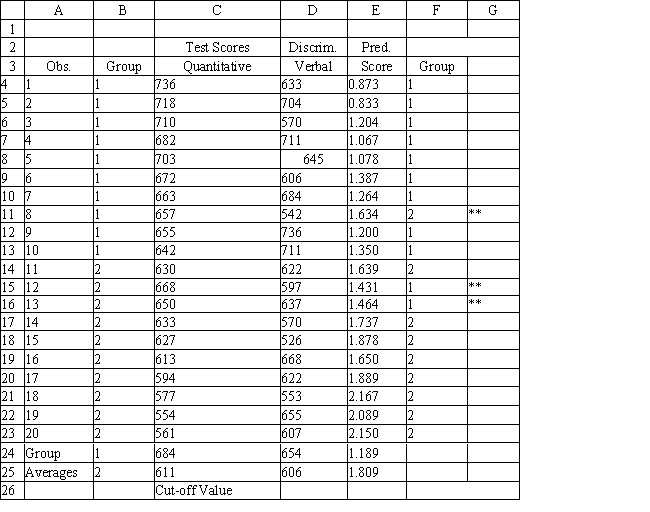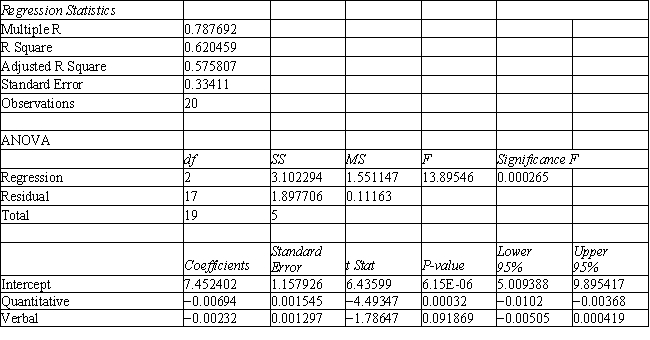Exhibit 10.1
The following questions are based on the problem description and the output below.
A college admissions officer wants to evaluate graduate school applicants based on their GMAT scores, verbal and quantitative. Students are classified as either successful or not-successful in their graduate studies. The officer has data on 20 current students, ten of whom are doing very well (Group 1) and ten who are not (Group 2) . 




-Refer to Exhibit 10.1. Suppose that for a given observation, the difference between Mahalanobis distances between group 1 and 2 (G1-G2) is big and negative. This means that
A) The observation is likely to be classified correctly to group 2
B) The observation is likely to be classified correctly to group 1
C) The observation is likely to be classified incorrectly to group 2
D) The observation is likely to be classified incorrectly to group 1
Correct Answer:
Verified
Q71: A _ provides a visual summary of
Q72: Which of the following is not true
Q73: The k-nearest neighbor classification technique
A) identifies the
Q74: A _ algorithm is used during the
Q75: Affinity analysis is a data mining technique
Q77: To create the training and validation data
Q78: A way to detecting and avoiding overfitting
Q79: Suppose that all observations in partition j
Q80: In using neural networks, an analyst must
Q81: The objective function in k-means clustering attempts
Unlock this Answer For Free Now!
View this answer and more for free by performing one of the following actions

Scan the QR code to install the App and get 2 free unlocks

Unlock quizzes for free by uploading documents